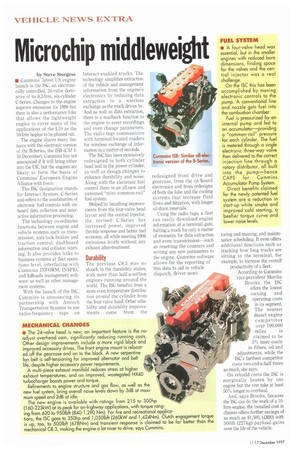MECHANICAL CHANGES
Page 18

If you've noticed an error in this article please click here to report it so we can fix it.
• The 24-valve head is new; an important feature is the noadjust overhead cam, significantly reducing running costs. Other design improvements include a more rigid block and improved accessory drives. The front engine mount is relocated off the gearcase and on to the block. A new serpentine fan belt is self-tensioning for improved alternator and belt life, despite higher accessory power requirements.
A multi-piece exhaust manifold reduces stress at higher exhaust temperatures, and an improved, wastegated HX40 turbocharger boosts power and torque.
Refinements to engine structure and gas flow, as well as the new fuel system, bring overall noise levels down by 3dB at maximum speed and 2dB at idle. The new engine is available with ratings from 215 to 300hp (160-223kW) at its peak for on-highway applications, with torque ranging from 620 to 950Ibft (840-1,290 Nm). For fire and recreational applica tions, the ISC goes to 350hp and 1,050Ibft (260kW and 1,424Nm). Clutch engagement torque is up, too, to 500Ibft (678Nm) and transient response is claimed to be far better than the mechanical C8.3, making the engine a lot nicer to drive, says Cummins.
















































































































